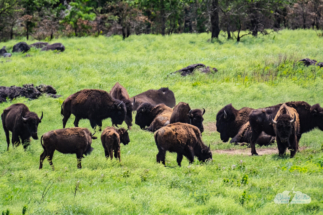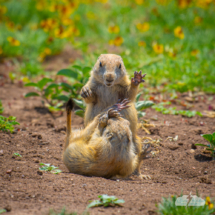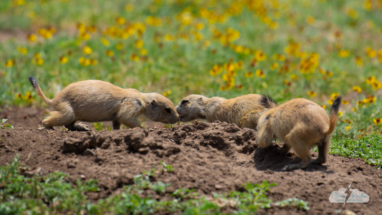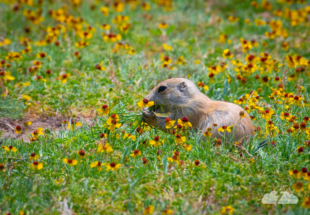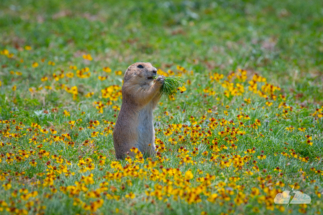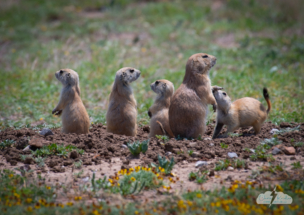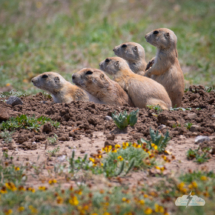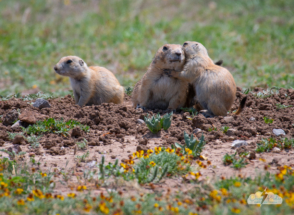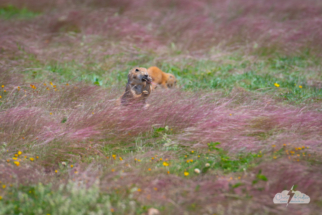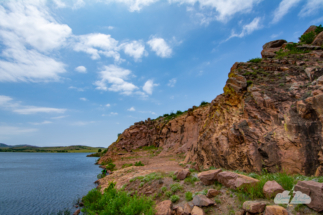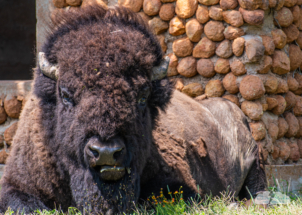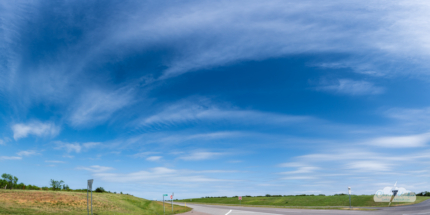Chris Kridler
Chris Kridler is a writer, photographer and storm chaser and author of the Storm Seekers Series of storm-chasing adventures.
Chris Kridler is a writer, photographer and storm chaser and author of the Storm Seekers Series of storm-chasing adventures.
It’s been a while since I’ve posted. I’ve been working on editing books and designing book covers. I launched my first collection at the Stolen Butter Gallery. I went on a road trip. And I hauled my camera here and there to shoot storms and space launches.
There were highlights – for instance, a violent storm on August 26 that produced a stunning shelf cloud that I captured in Cocoa Beach, with the statue of champ Kelly Slater “surfing” the wave of the storm. And sometimes, even when a launch was lackluster, the skies were beautiful anyway. But the pattern this summer has strongly favored the west coast of Florida, so we haven’t had much in the way of good storms, and when we did, I was out of town for most of them.
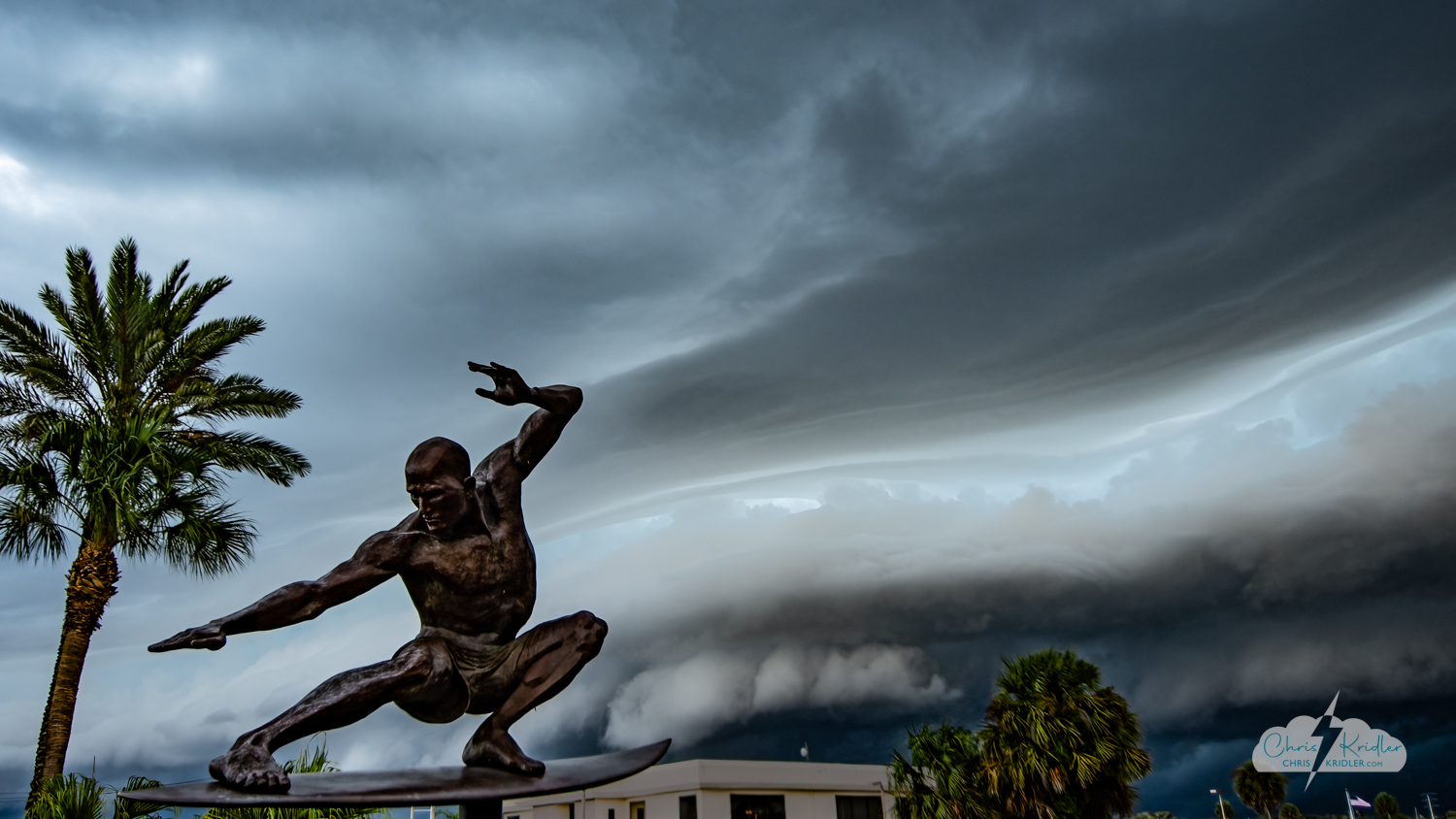
A shelf cloud moves into Cocoa Beach, Florida, on August 26, 2022, as the Kelly Slater statue surfs the sky. ©2022 Chris Kridler, ChrisKridler.com
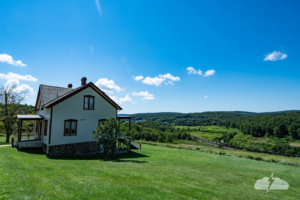
At the Johnstown Flood National Memorial, on the edge of where a large lake once stood until the South Fork Dam broke and caused the 1889 flood.
One of the highlights for me was visiting the Johnstown Flood National Memorial in Pennsylvania, site of the lake whose water hurtled downstream, destroying everything in its path and killing more than 2200 people, when the South Fork Dam broke in 1889.

I was entranced by the clouds’ reflection in the calm waters of the lagoon on August 27 after the rocket launch.
While we’re all awaiting the twice-delayed launch of the Artemis moon rocket, other launches have kept the skies interesting over the Space Coast. I’ll let the photos speak for themselves.
Roll over any image to see a caption, or click on a photo to start a slide show.
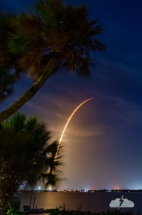

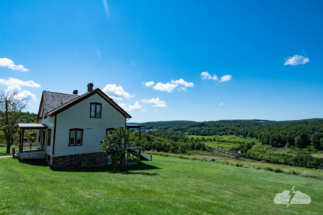

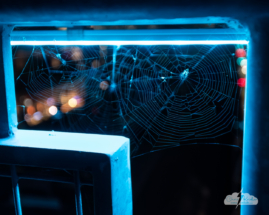

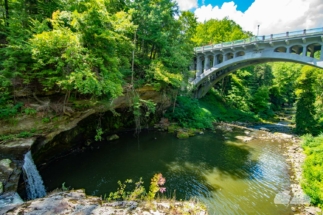
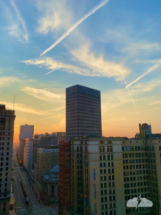


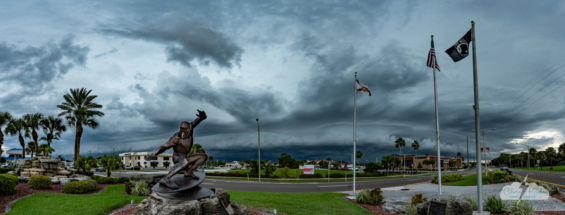
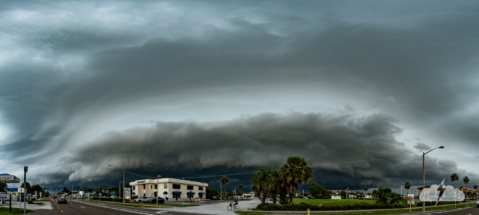


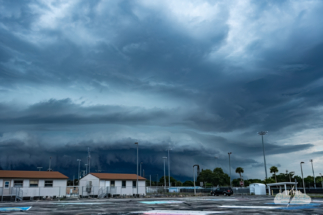



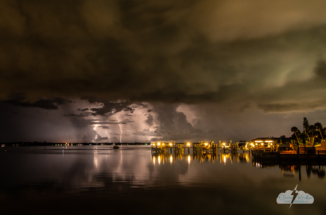
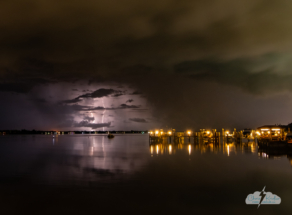
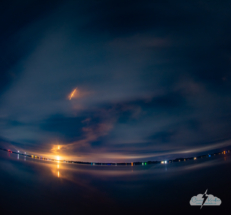
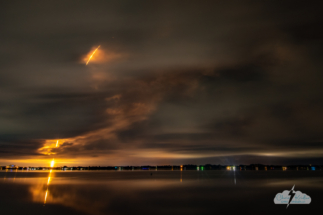
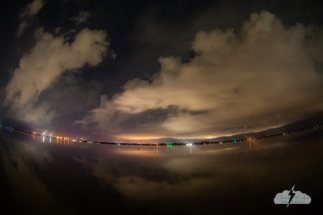
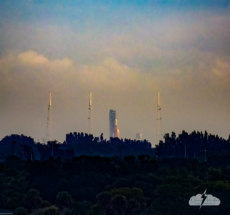

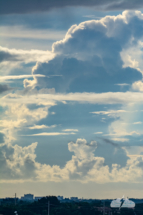
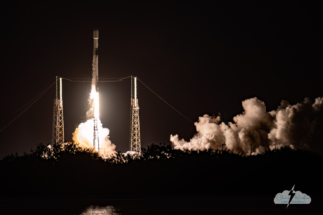
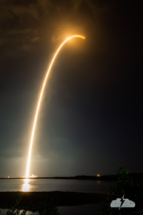
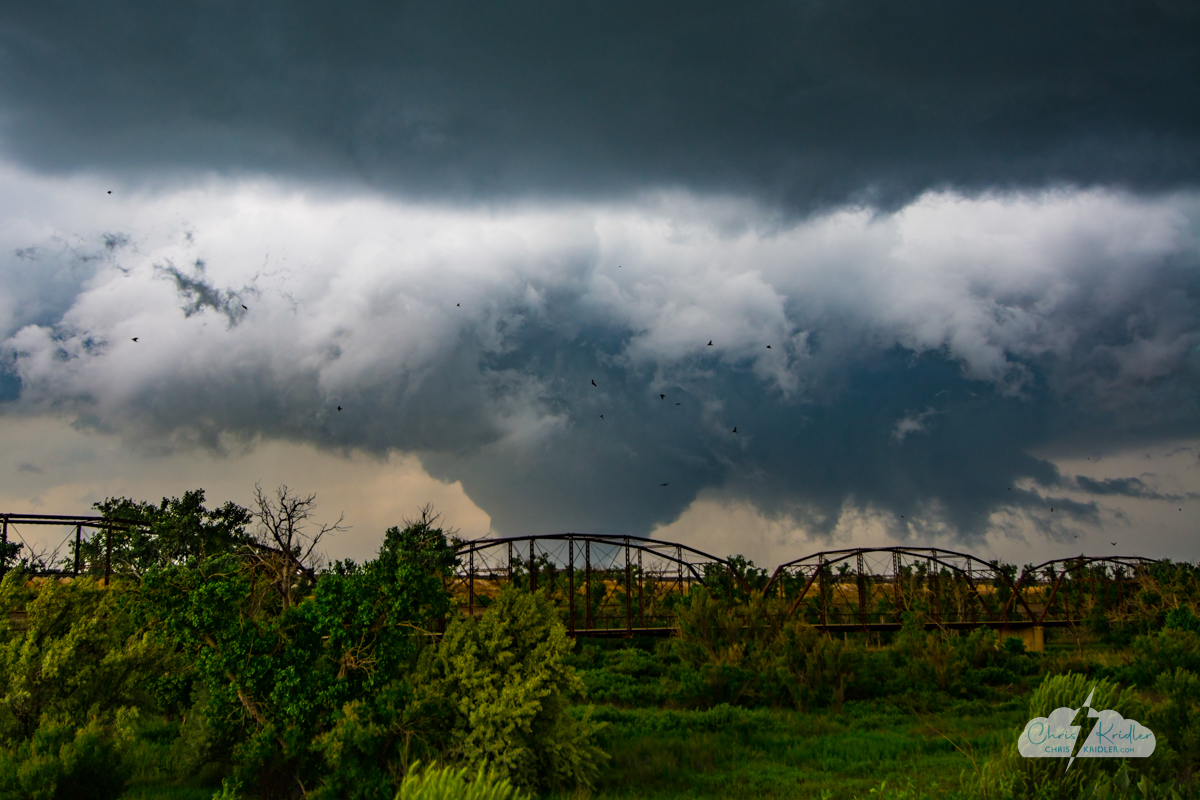
“A Bridge Too Far” – Tornado at Canadian, Texas, May 27, 2015. Photo by Chris Kridler, ChrisKridler.com. Now available at Stolen Butter gallery.
The long story: I’ve always sought new ways to share my photography. I used to do occasional weekend art shows. These days, digital dominates, but a quick look on Facebook doesn’t compare to the experience of seeing a gorgeous print on the wall.
Business-wise, the assumption increasingly is that photographers should give away their work; while stock is a respectable venue, I found that losing all control of my images and being paid pennies for them (even when they appeared in major outlets like The New York Times) wasn’t for me. I’ve recently exited my stock agreement for several reasons, from delays in payment to seeing my work used in unpleasantly surprising ways.
What we do as storm chasers is extremely specialized, technical, expensive, and hazardous. The photographs we produce are art. As a photographer, I’ve moved more toward artistic expression and away from stark documentation. So I was thrilled when Rachael contacted me about joining the gallery.
I hope you’ll take a look (and subscribe to get notices of additions to the gallery, artist spotlights and more). I have more collections planned, including lightning and rocket launches. In the meantime, you can browse some of my favorite storm images here.
Thanks for your support!
August 1 offered one of those local chases that would have been better if I’d been about an hour’s drive to my west. But we’d just had dinner in Cocoa Beach and watched the storms going up as twilight deepened into night, and I had a feeling if I attempted the drive, I’d never get into position.
So I opted for a wide view instead and got some pretty structure shots as the moon set behind the storms filling the western night sky. I filmed a GoPro “nightlapse” timelapse from Rockledge and shot photos, too. The video is pretty as the moon descends behind the flashing lightning storm and planes zoom around it, with sprinklers dancing in the foreground.
Our house got none of the rain. It’s the driest summer I can remember here on the east-central Florida coast. Memory is not a great scientific measurement, but let’s just say the plants are really unhappy. This summer doesn’t feel like subtropical Florida.
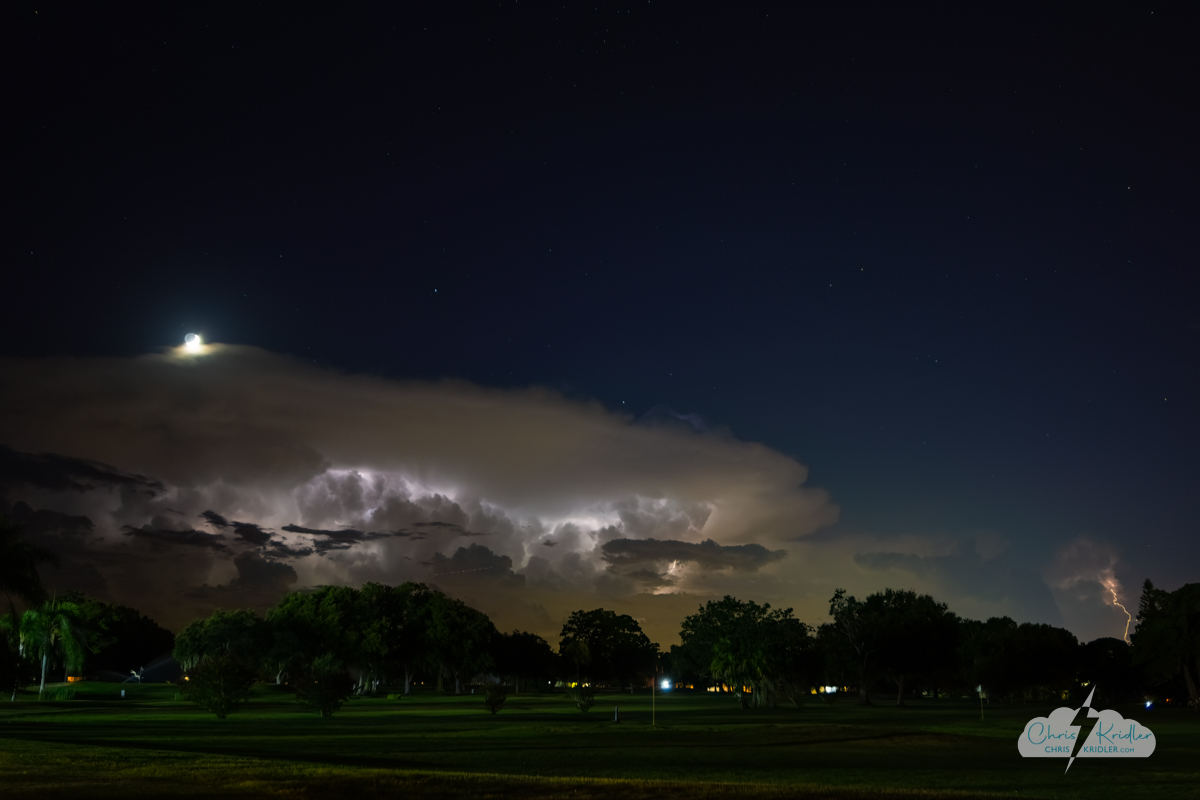
The moon sets behind a cluster of lightning storms in central Florida on August 1, 2022.

Shelf cloud over the Indian River Lagoon.
The other thing about Florida is trees. Yes, a lot of the state — especially from central Florida north — is covered in trees. So even though we don’t have many hills getting in the way of our views, trees are confounding.
The best way to chase storms in Florida is to dedicate entire days to hanging out in the center of the state waiting for sea-breeze boundaries to collide and chasing whatever pops up from these and subsequent storms formed on boundary collisions. But since I’m usually working on other stuff, I don’t often have that luxury. That’s why, when a nice lightning storm or shelf cloud materializes in my area and I have enough notice and time to get to it, I’ll dash out the door and take my chances. If I actually get on a good storm, then I can be quite obsessive about squeezing every last lightning bolt out of it, but those occasions are rare.
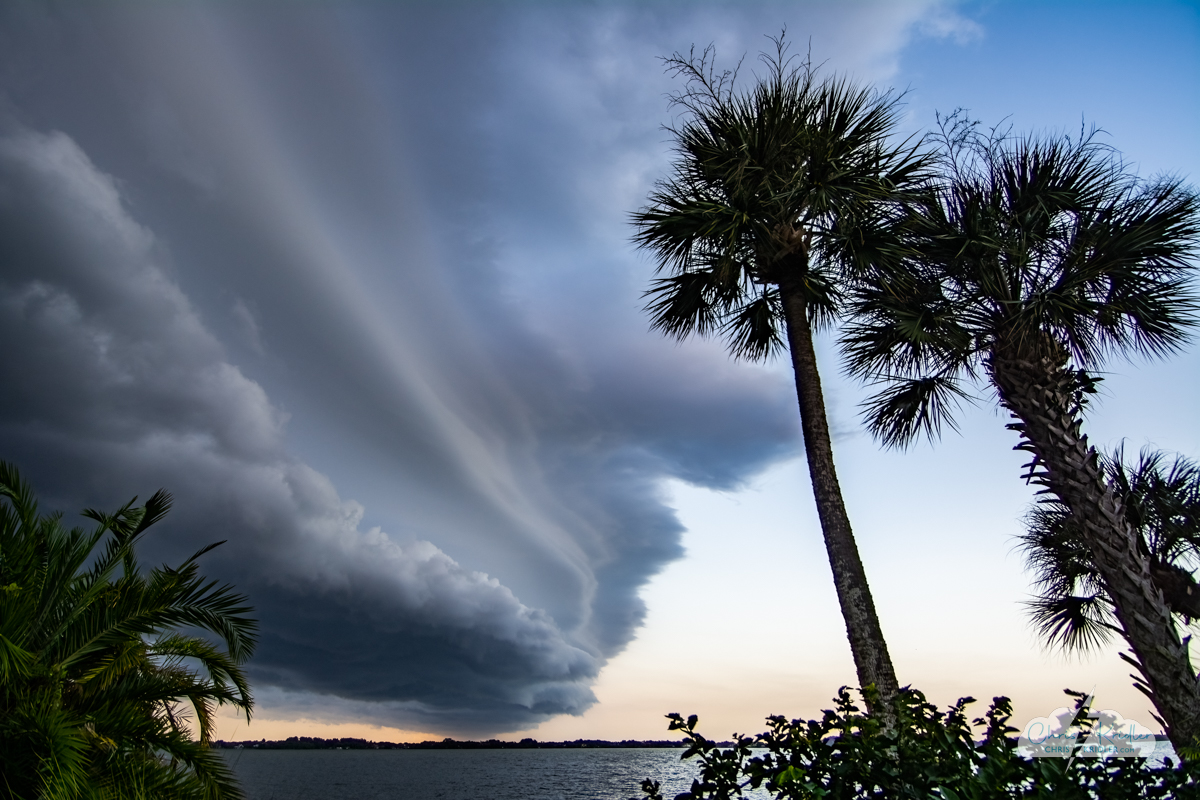
Looking east at the shelf cloud.
My first stop was just up the river road in Rockledge, looking north toward Cocoa, where I saw a piece of the shelf cloud looming over the Indian River Lagoon. From there, I went south to the old Harvey’s citrus plant location and took some shots, then to the extreme southern end of Rockledge (the River Rocks parking lot) to let it overtake me. It was so, so beautiful, I took a ridiculous number of photographs.
A note about my photo editing: I used to be much more of a stickler for documentary photographs. I didn’t do much to enhance contrast and color, just a bit of work and a decent crop. But I’ve become more forgiving and have learned to let my creativity guide me. I’m not faking anything, but I am embracing enhancements of natural colors and bumping up clarity and contrast so you get the feeling I get when I look at the storms. I take a more artistic view. I even occasionally remove power lines (one of these photos has power lines removed, as marked).
Storm chasers have different styles when it comes to photo edits. I’ve noticed a trend toward super-dark edits. Some crank the clarity (a Lightroom/Photoshop setting) to extreme levels. I hope I strike a balance between nature and art. I was thrilled with this storm and these photos. Enjoy.
Roll over any image to see a caption, or click on a photo to start a slide show.
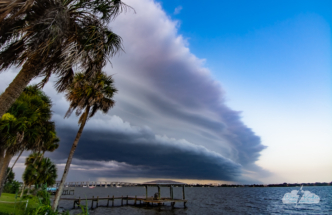
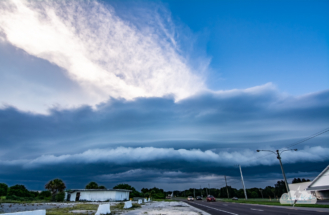
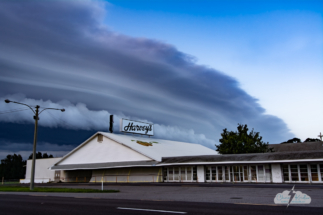
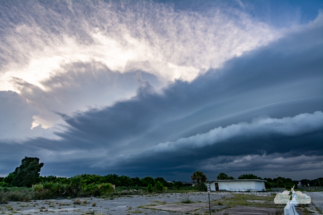
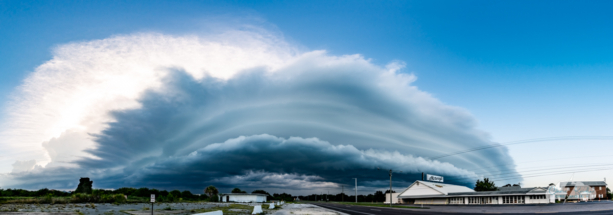
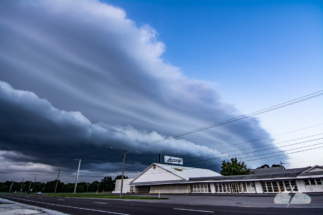

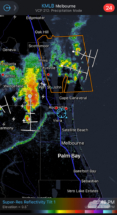
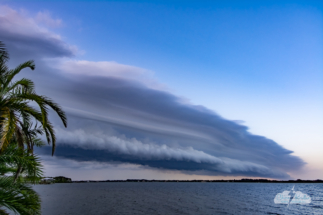

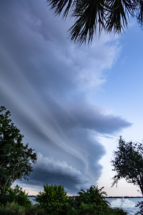
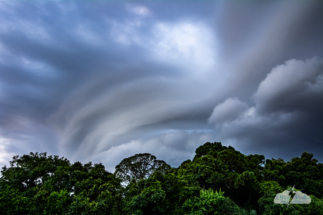
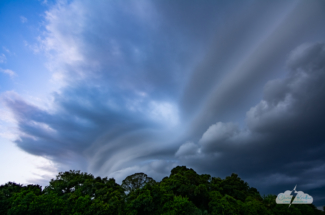
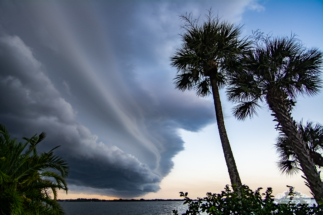
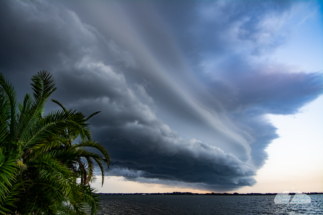
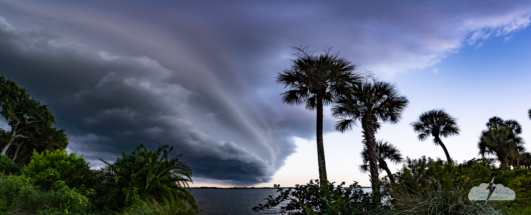
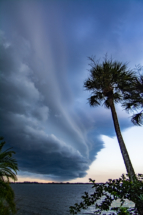
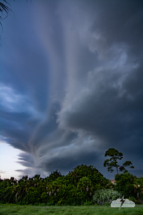
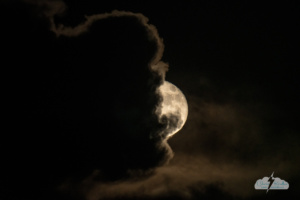
Half-hidden, the mysterious moon.
After the launch, Alethea Kontis and I went to the shore of the Indian River Lagoon in Rockledge, Florida, to shoot photos of a line of lightning storms offshore – and the magnificent moon rising above them. Not captured here is the bioluminescence in the river, as every little movement by fish and other creatures left trails of glowing blue behind like underwater fireworks.
The pictures and videos tell the story best. I’ve stayed up too late putting these together, so I’ll let them speak for themselves. Roll over a photo to see a caption, or click on any image to start a slide show.

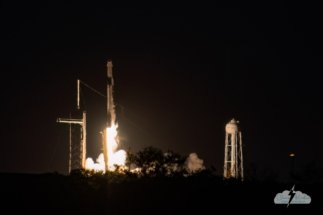

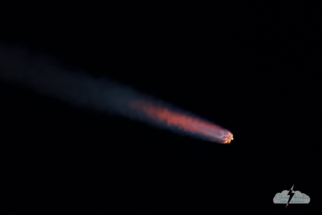

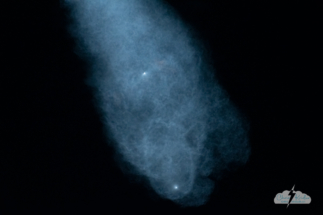
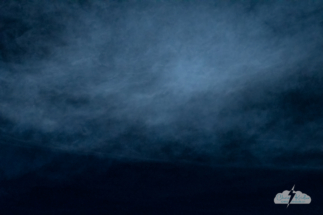
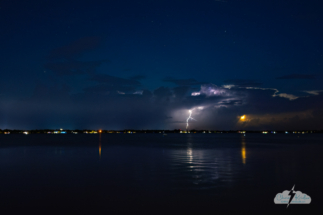
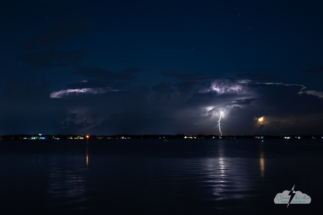
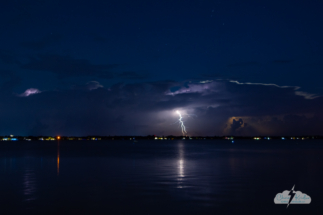
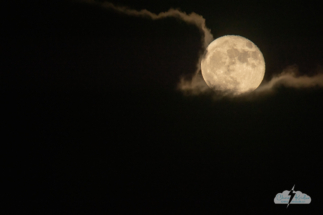
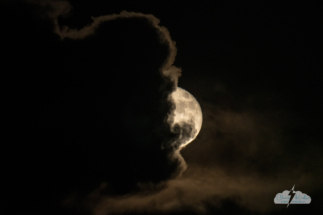
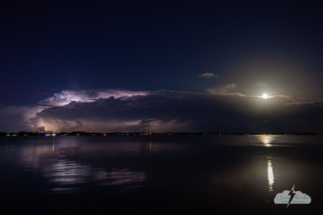
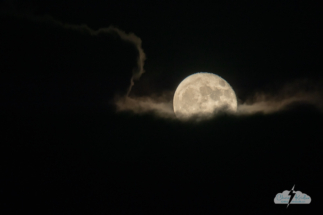
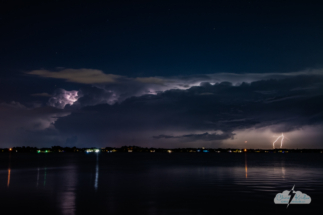
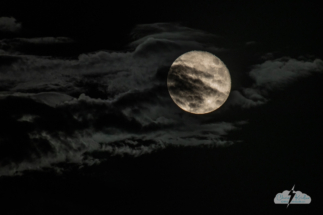
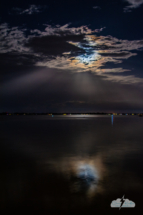
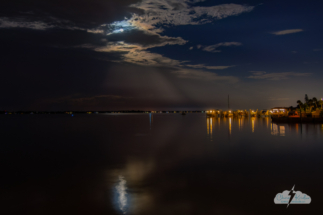
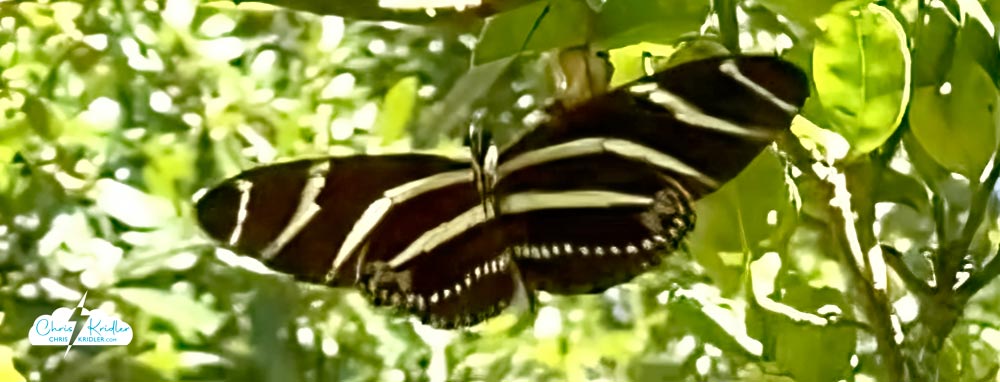
Zebra longwing butterfly.
I see these butterflies often in our yard. They’re the Florida state butterfly, in fact. I’m sure our neighborhood would have more of these visitors if people would refrain from bringing in the professional insect killers to spray clouds of poison every few weeks. Sigh. I try to give these lovely butterflies a safe place to hang out.
This relaxing video shows these beautiful creatures fluttering in slow motion.
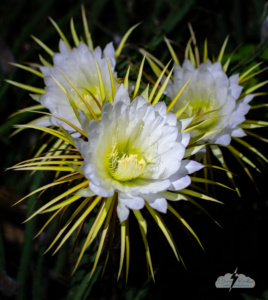 The show is almost over. The last few night-blooming cereus blossoms are maturing on our cactus vines, which climb a palm tree and our front porch. I’m also trying to start one in our live oak after seeing photos of a dazzling display in Orlando.
The show is almost over. The last few night-blooming cereus blossoms are maturing on our cactus vines, which climb a palm tree and our front porch. I’m also trying to start one in our live oak after seeing photos of a dazzling display in Orlando.
What am I talking about? The dinner-plate-size flowers that each bloom for just one night. Here in central Florida, they start blooming in May.
This year, as I do every year, I shot timelapse video of the flowers opening. Only this time, I included it in a three-minute documentary about the blooms. It pretty much says it all. These delicate dancers of the night live their best life when most creatures are asleep.
See the video above, or click on any of these images to start a slide show.
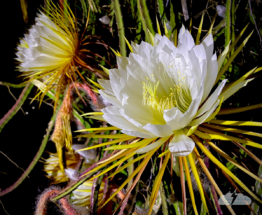
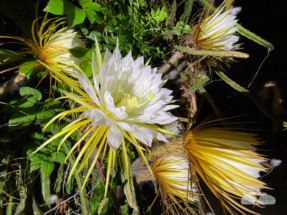
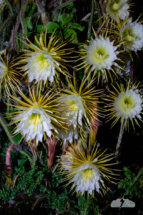
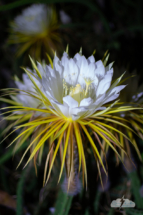
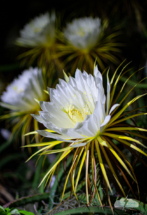
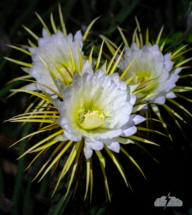
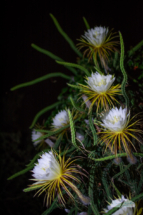

I believe I am not the only one: Photographers spend a lot of time thinking about what they could’ve done better. Storm chasing is much the same way. If I had access to a time machine, there are several tornado events I’d like to revisit, reshoot and re-experience. Of course, it helps when you know where things will happen and when.
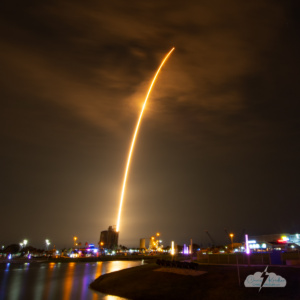
SpaceX launches a Globalstar communications satellite from Cape Canaveral early on June 19, 2022.
Rocket launches are challenging. Pads change. Rockets change. Trajectories change. And even if you’re using an app or dead reckoning or whatever, it’s sometimes hard to predict exactly where the rocket will appear in your photo. I’m so impressed by the photographers who do the math and get a rocket crossing the moon. I’m just trying to figure out where it’s going to leave the horizon and how the arc of a time exposure at night will frame objects in the foreground.
I set up at Port Canaveral by Exploration Tower. My GoPro timelapse would include the tower; I planned for my still image, shot with a Nikon D500, not to include it. But I knew the industrial towers across the water might be a problem; the rocket would go up around there, and one of the towers might block the horizon where it lifted off. And that’s exactly what happened. I should’ve stayed in position to get the reflection I wanted, but at the last moment I dashed away a few feet to shoot the still image and basically didn’t get anything I wanted. Sigh. That said, here’s the image so you can judge for yourself.
Complicating matters, a lightning storm in the distance taunted me, but without two different exposures and compositing the images, I didn’t see a great way to get the launch and the lightning in my photo. I did get a couple of stills with just the storm, soft and dim over the port’s bright lights.
The video, on the other hand, is pretty darn cool. The lightning storm offshore to the north strobes as the port’s lights flicker and change color. Suddenly, with a brilliant burst of light, the rocket launches upward, sets the clouds aglow, then arcs as it continues toward orbit. The whole video is less than a minute. I love all the color and light.
And I’m already considering how to frame the next one.
Is it storm chasing when there are not actually storms to chase? I say yes. Especially when we wander around traditional chase territory in between the storms.
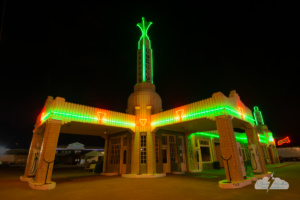
A Route 66 landmark in Shamrock, Texas: The restored Conoco and U Drop Inn at night.
Still, we saw a few other outdoor attractions in Shamrock (see the photos) before moving on. I had no idea an alleged piece of the Blarney Stone was here.
Moving on, we had a nice lunch in Wheeler, then went on to find the remote and desolate intersection in the Texas Panhandle where the last scene of “Cast Away” was filmed. This is where Tom Hanks’s character delivers the package he kept unopened while stranded on the desert island – a symbol of dedication and hope that leads him to promise for his future.

The intersection featured in the movie “Cast Away.” Location: 35°38’2.23″ N 100°27’5.29″ W
We also headed to Groom, Texas, perhaps best known for its giant cross. We focused on the leaning tower of Texas, aka the Britten water tower, which leans and balances on two legs thanks to the perfect amount of water in its tank. It was positioned this way to attract visitors to a truck stop that burned down long ago. You can read more on the excellent Atlas Obscura website.
Then it was on to The Big Texan in Amarillo, where we did not eat a “free” 72-ounce steak* … *dinner if eaten in one hour. That asterisk is on all the billboards. Look for it!
Roll over any photo to see a caption, or click on an image to start a slide show.

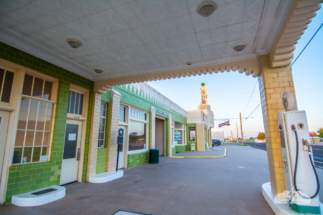
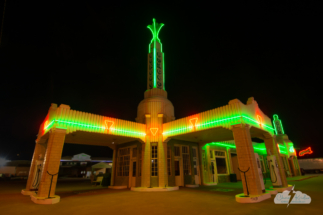
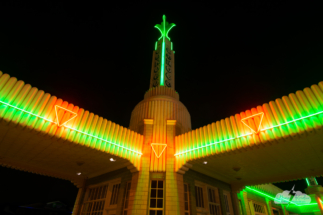
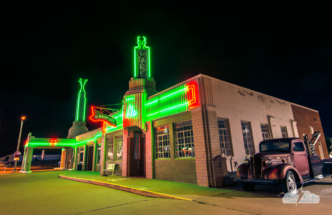

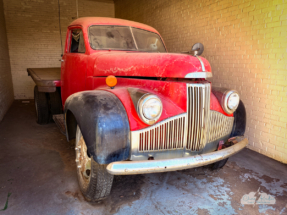
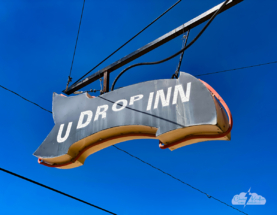
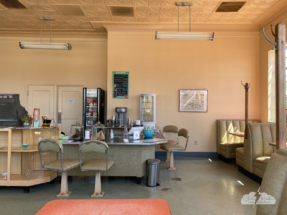
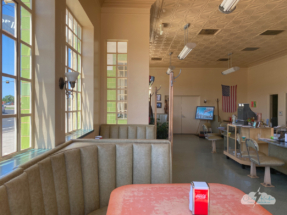

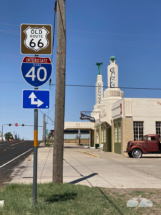


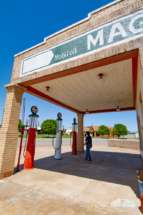


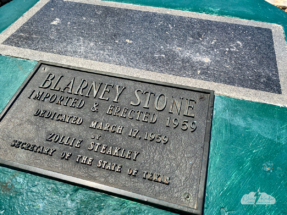





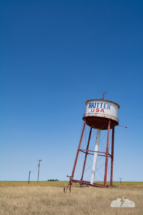





I can look at prairie dogs forever. (You can probably tell from the video, which is five minutes of pure cute.) I find it so relaxing to watch them, plus they’re adorable. I had a great experience taking photos there last year, so when Alethea Kontis and I had a break in our slow storm-chasing season, we made a trip to the Wichita Mountains Wildlife Refuge in southwest Oklahoma to visit their town again.
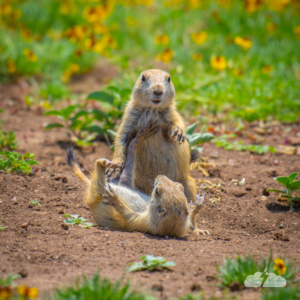
Prairie dog playtime!
They made a few sounds while I was there, but it was a very windy day, creating a lot of wind noise in the microphone, and in the face of a loud mansplaining tourist, several yelling kids, and droning motorcycles, I decided to minimize natural sound in the video and use music instead.

Wichita Mountains Wildlife Refuge panorama.
Roll over any image to see a caption, or click on a photo to start a slide show.
